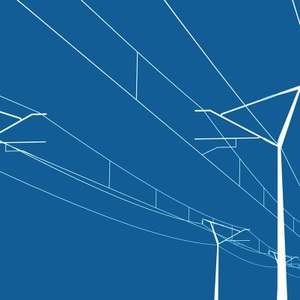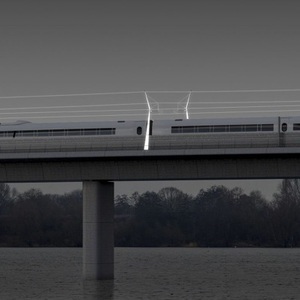Client: HS2/Future Railwaysdesigner: Ramboll Computational DesignLocation: London
Date: 2014-03-01 00:00:00 +0000 UTCTags: London, product, design, steel, folded, plate
HS2 Aesthetic overhead line structure
A Ramboll project
Our shortlisted entry for the Aesthetic Overhead Line Structures (AOLS) competition organised by Future Railways and the RIBA addressed the need for overhead electric rail pylons on the route of the proposed HS2 railway that should blend into or compliment areas of outstanding natural beauty rather than the more stark and utilitarian solution used on the nation’s rail infrastructure.
Our proposal was a simple cantilevering folded steel plate mast that cranked at high level, the crease formed by the natural fold of the plate geometry. The fold could change angle depending on the height of the mast, the angle of the track or the surrounding landscape.
Our design attempted to address two seemingly conflicting criteria: Firstly, the need for a mast design that represents technological progress and the concept of speed as per the HS2 project. Secondly, the need for an elegant design that will sit alongside the areas of natural beauty that HS2 will pass through. Finding a solution that meets these two criteria best describes our idea - elegant geometry that fits with its surroundings, whilst reflecting technological progress that the HS2 project represents.
The visual impact from a set viewpoint is much more obvious to design for than considering the view of the masts from the perspective of those on the train. As one stares from the window inside a carriage, the rhythm of the tracks and their slight imperfections from rail to rail are magnified by the speed of transit. This idea of relative motion means that to those on the train, the masts are in motion. Likewise from the mast’s point of view, the train is in motion. This underpins the design of the mast as a dynamic object - not as a literally moving structure (which brings a level of complexity we believe is not required for this brief), but treating the masts as a series of frames which give the illusion of motion. Thus, a subtle fold in the structure is adjusted along a series of masts, with the mast moving inward as the tracks approach obstructions such as bridges.


